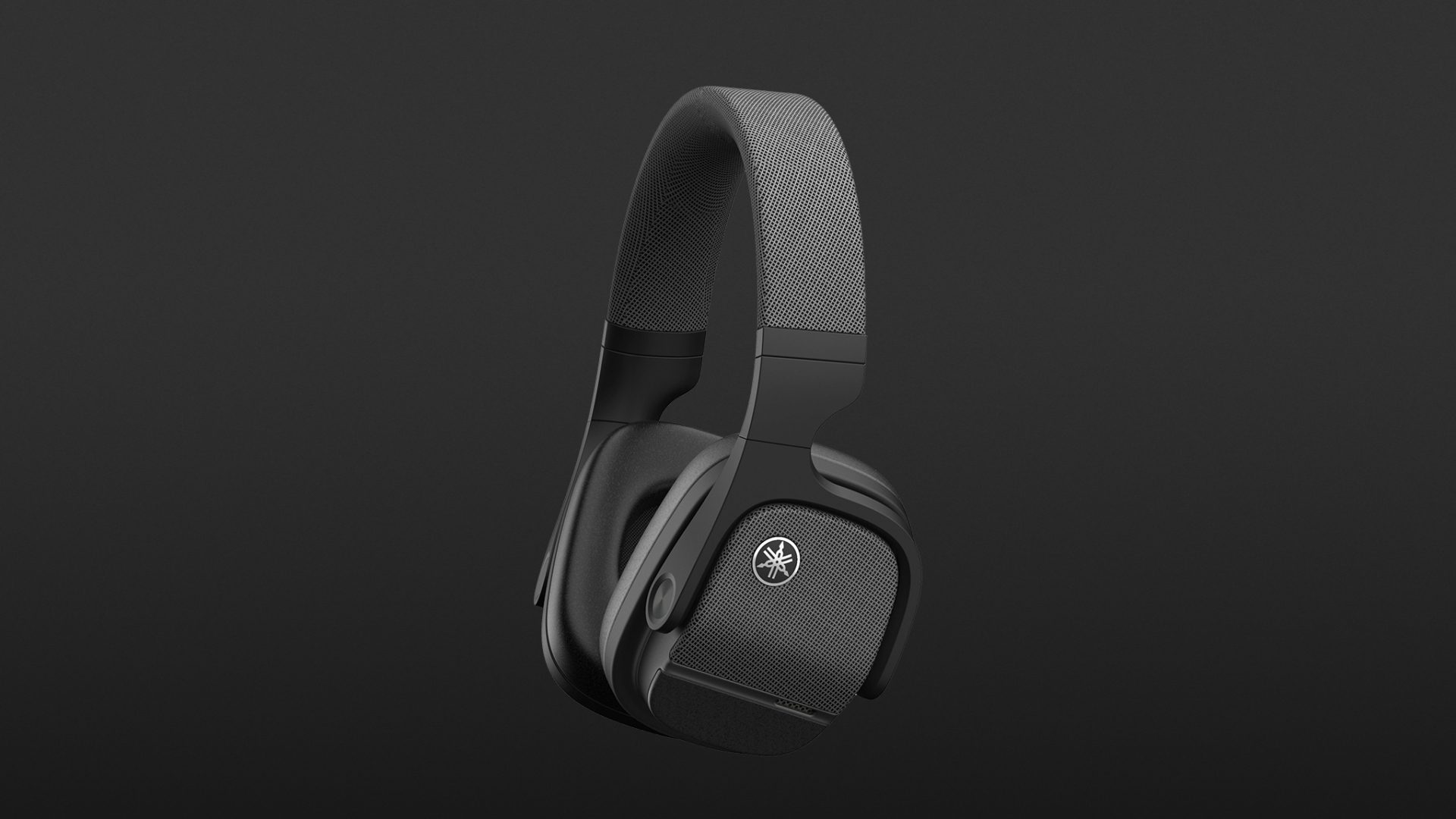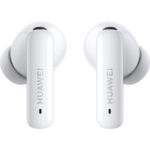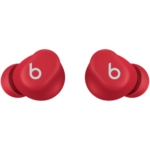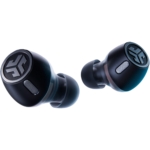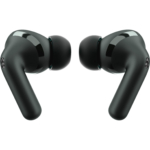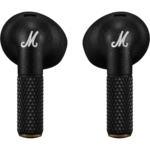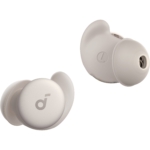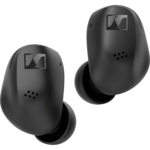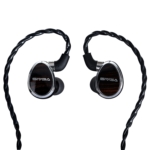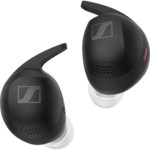With a price of over 500 euros, Yamaha confidently places the YH-L700A alongside established products from their competitors. In terms of sound, these distinctively designed headphones deliver a thoroughly convincing performance, which you would expect in view of the price. After all, the product is significantly above the Sony WH-1000XM4, which is far superior to the Yamaha product in terms of noise cancelling.
The other technical features such as Listening Optimizer and Listening Care hardly add any value, at least for me. The benefit of the 3D Sound Field when enjoying conventional music sources is a matter of taste. For me, it only became interesting when listening to multi-channel source material. And even then, head tracking is no guarantee of improved sound results. The technology itself is interesting and leaves you curious about future applications that may be made in the field of virtual reality. On the other hand, Yamaha does not see the YH-L700A as a pair of gaming headphones. In summary, I find Yamaha’s new product sonically convincing, technically impressive, but still too expensive …
With the YH-L700A, Yamaha offers wireless closed over-ear headphones with a unique design and integrated noise cancelling, 3D audio and head tracking.
The first thing that stands out about the Yamaha YH-L700A is its rather unusual but undoubtedly distinctive design. The padded headband and the outer sides of the somewhat square earcups are covered with dark grey fabric, while the inner sides are covered with black imitation leather.
The headphones (firmware 1.40) support Bluetooth 5.0 and offer audio codecs including SBC, AAC and aptX Adaptive. This is a sensible and up-to-date choice, particularly for low latencies, although unfortunately, the LDAC codec with its particularly high potential data rate has been omitted. Loss-free sound transmission is provided by a cable connection, which works both actively and passively – practical for when the battery gives up.
In addition to the controls on the headphones, which don’t have any touch sensors, a free app called “Yamaha Headphones” is available for iOS and Android, which offers further function control. Here, as well as on the headphones themselves, the integrated noise-cancelling and the so-called 3D sound field function can be controlled.
In practice
Thanks to the well-padded earpieces, which can be swivelled via a joint and can also be folded and rotated, the Yamaha YH-L700A fit well. It is also possible to store the headphones in the supplied hard case and fold one side away for short periods. However, for DJ use, the mechanism is rather unsuitable. The headband ensures a fairly tight fit but the YH-L700A, unfortunately, tend to slip forward. My hair got caught in the folding mechanism several times during the test.
The Bluetooth link worked reliably over several rooms without interruption during our test. Rarely did pairing require a second nudge.
The function control on the unit itself was straightforward. On the right side are the buttons for switching on and off and pairing, as well as for controlling the 3D sound option, while on the left a button configures the noise-cancelling – each accompanied by voice confirmation. In addition, there is the USB-C port and the single-sided jack for cable operation.
A three-part switch panel is available on the outside of the right earcup. Here, the usual functions such as start/pause, volume control, track skipping, call handling and calling up a voice assistant are possible. These controls are not particularly easy to feel, but accidental activation is practically impossible. The only automatic function comes in the form of an automatic switch-off after a selectable period of inactivity. I would have liked to see automatic pausing of music playback when the headphones are removed. The other functions and firmware updates are handled by the well-designed app.
According to the manufacturer, the battery power offers a maximum usage time of 35 hours with noise cancelling activated. If you also activate the 3D sound field mode, this value is reduced to eleven hours. The charging time is approximately 3.5 hours.
ANC and ambient sound
The Yamaha YH-L700A has active noise cancelling. Using the corresponding button or the app, you can switch between ANC, an ambient sound mode in which outside noise is fed into the listening channel via the microphones, and inactive status. Further control options, like intensity control, are not available in the app.
The result of this means that while sitting quietly, the circuit creates an extended quiet space that is conducive to music enjoyment. Fortunately, the quality of music playback is maintained; according to the manufacturer, this is ensured by a specially designed algorithm. It seems to me that the YH-L700A sound best with noise cancelling which even brings out the low bass a little.
I would describe the intensity of the noise-cancelling as medium. A diving bell effect does not occur, but the suppression is mainly limited to low-frequency background noise. Speech and keyboard clatter still reach the ears, albeit at a reduced level. Wind noise, as with all competitors, is a minor problem that, so far from a technical point of view can hardly be avoided.
As mentioned, the YH-L700A performs best indoors. And of course, you can also use the noise-cancelling without active music playback thus ensuring more peace and quiet during train journeys, for example.
Switching to ambient sound mode is quick and useful for communication and orientation. However, helpful features such as automatically switching on the function in pause mode are not provided, nor is an intensity control.
Sound
The Yamaha YH-L700A need a certain, quite powerful level to sound good and the drivers deliver this level with ease. These headphones can also meet higher demands. In the bass, they sound tidy, precise and powerful, even down to the low bass range if necessary. In the midrange, voices and instruments of all kinds impressed me, from warmth to aggressive distortion. Even dense string arrangements such as the finale of the overture of Rossini’s “The Barber of Seville” were well reproduced. Distorted rock music sounds good in the full range of the spectrum.
And these headphones also impressed me in the high-frequency range. They sound open and fast but sometimes overshoot the mark slightly at the border of harshness. However, the speed is mostly welcome and also provide the basis for a crisp reproduction of transients as well as an exact illumination of the stereo panorama, which is broad, stable and comprehensible during movements (Garbage: Godhead).
The YH-L700A also reproduce spatial effects with confidence: While the depth gradation is, as expected, less successful than with good speakers, spatial effects are clearly audible, for example in Algorithm by Muse. The dynamics, in combination with noise-cancelling, are so good that even in mobile use, classical music or jazz can be listened to with pleasure. Up to this point, we have described the sound with neutral two-channel stereo playback.
Passive wired operation demonstrates the good quality of the drivers. If you switch on the electronics, the volume but also in my opinion the sound is slightly changed. It is certainly a genuine additional benefit to be able to use the YH-L700A with a cable, although the focus is clearly on the wireless connection In this context, I should also mention the good voice quality rated by those on the other end of the line during test phone calls.
I am rather sceptical about the so-called Listening Optimiser. According to Yamaha, when this function is activated, the “seal and air leakage” is determined every 20 seconds via an internal microphone and the playback is optimised or linearised accordingly. In practice, I hardly noticed any differences in the switching. This may be due to the already good fit of these over-ears in my case. Apple uses a similar process to help its AirPods with great success – but these are EarBuds, which often fit awkwardly in the ear.
The Listening Care function was similarly subtle. The instructions talk about volume-dependent sound optimisation via equaliser. This sounds a bit like a dynamic extended loudness circuit, but for me, it was hardly perceptible. Especially since the impression of the frequency response varies at different levels anyway, making comparisons difficult. A manually adjustable equaliser would be a desirable option for the future, at least in my opinion. Finally, that leaves …
3D Sound Field
Here Yamaha uses DSP algorithms to counteract the direct sound of headphones. In doing so, the Japanese manufacturer draws on experience from the field of AV amplifiers and aims to transform two-channel sound sources into a “three-dimensional sound space”, with the potential of head tracking to boot. Admittedly, I was sceptical about this …
Soundwise, the DSP processing is more subtle than expected when head tracking is switched off and conventional source material is used. Depending on the programme selected, the music sometimes gets an additional three-dimensionality, sometimes a slight three-dimensionality, which actually frees the sound somewhat from the usual headphone projection and adds “depth”. The fixed settings “Cinema”, “Drama”, “Music Video”, “Concert Hall”, “Outdoor Live”, “Audio Room”, “Background Music” also add air and cohesion depending on the source, just like a good room simulation in the studio does. This effect is particularly noticeable in recordings with reduced content. From an audiophile point of view, however, this naturally moves away from the idea of the mix, which is why I tended not to use the function.
However, with Dolby Atmos and 360 Audio, there are formats that can transfer multi-channel mixes to headphones thanks to virtualisation and HRTF. And this leads to impressive spatial results. In principle, such formats work with all headphones, except that Yamaha adds the additional room simulation to support the effect.
In addition, like current Apple products, the Yamaha YH-L700A offers head tracking. Here, the orientation of the head is detected via acceleration sensors and the stereo centre is tracked parallel to the head movement. This is unusual, to say the least, and hardly makes sense when listening to conventional music. However, if you use the aforementioned specially prepared recordings or games with corresponding sound output, then it becomes quite interesting and it can sometimes seem rather spectacular to be able to turn and move in the sound space. For example, you can turn toward particular instrument sections in an orchestral recording and thus interactively bring them into focus .
Technical specifications
- Ear couplingOver-ear
- Typeclosed
- Transducer principledynamic
- Frequency response (headphones)8 Hz - 40.000 Hz
- Weight without cable330 g
What's in the box
- Cable with 3.5 mm stereo mini plug
- USB-C charging cable (50 cm)
- Airplane adapter
- Carrying case
Special features
- BT codecs: SBC, AAC, aptX Adaptive
- BT version: 5.0
- BT profiles: A2DP, AVRCP, HFP, HSP




